Allies Cables
Cable manufacturers all around the world use and apply many different types of shielding options for mic cables, guitar cables and bass cables. There are four different main types of shielding options for these cables.
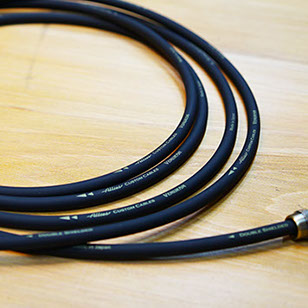
Braided Winding Shield
Winding the copper wires alternately to a mesh or netlike pattern.
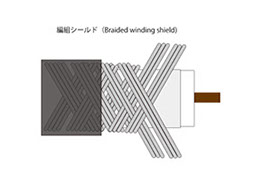
1.The Braided shield is wound evenly which has more advantage for shielding. But one of the disadvantages is that excess noise will occur through the gaps between the braids. To avoid this excess noise, the braids needs to be tightened which makes the cables heavy and stiff.
Spiral Winding Shield
Winding the copper wires alternately to a mesh or netlike pattern.
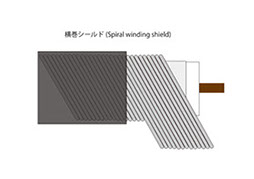
2. The Spiral shield is wound in a constant spiral pattern, when stationed to a point it allows less noise and recommended for stationary installation such as recording or studio situations. When the cable is bent, the gaps occur and tends to deteriorate when flexed too frequently.
Double Spiral Winding Shield
Winding the copper wire on twice, each time in a spiral pattern from different directions right to left
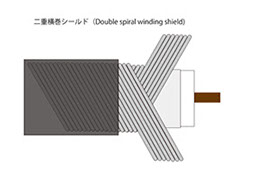
3. The Double Spiral Shield is wound twice each time in a spiral pattern in a different direction from right to left. Unlike the horizontal wounds, when flexed the excess noise does not occur due to the gaps being enclosed by this shielding method. The cables are heavier because they are wounded twice.
Film Foil Shield
Consists of aluminum foil or gold foil wounded around the cable in the form of a tape.
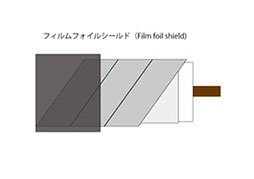
4. The Film Foil Shield is said to be the most noiseless cables because the cables are wounded with foil in the form of a tape. But the winding material is made from metal which makes this method much heavier and stiffer than the other shielding methods.
The above are examples of common shielding methods and options. Not only does the methods affect the tone, but the winding density and the strength will also affect the noise and the flexibility of the cable which is a key factor to the cables.
With all the information above, we can tell from the facts that each winding method has its own characteristics and difference in sound. But the key element to the tone/sound is said to be the combination of the cable capacitance and the guitar pickups which creates the LC resonance. Broadly speaking, if the capacitance of the cable is lower, the resonance frequency will be higher, which sounds relatively flat with a bit of the high frequency being added. On the other hand, if the capacitance is higher, the resonance frequency will be lower, the high frequency tends to be a bit nasally. At the same time, it feels like the mid frequency and the low frequency is emphasized which gives you a rich and fat tone. But this doesn’t mean that the low capacitance will be preferred or recommendable. We believe that the manufacturer will decide how they wish to tune the capacitance and aim for the ideal sound. In addition, the material of the conductors, insulators, structure and the thickness of the cable will also affect the tone. Checking the cables with your own equipment/instrument by ear would be the best option to suit your style.
We decided to select the “Double-Spiral Shield” method for our Allies Cables. The double-spiral cables tend to work for the guitar players using them on stage. It works well to reduce the excess noise while keeping sufficient flexibility in the cable. Plus, the sound was very natural. For roughly three years, we tested all of the possibilities regarding density and the strength of the copper wire. At the same time, we were developing our Allies plugs, combining both the cables and plugs to test and search for the sweet spot. The flexibility and the noise balance were also a determined factor. Instead of lowering the capacitance, we mainly focused on testing and comparing the actual sound/tone of the cables by ear. As a result, we figured out that the lowest capacitance cables were not the best and suitable sounding for guitar cables. To achieve the sweet spot we figured it needed a fixed amount of capacitance.
Through countless trial and error, we came to a conclusion to proceed with a straight and natural sounding cable. Of course, it’s simple to explain in words, but this nuance can be defined differently to certain people. So, the question is “What is the foundation for getting started to develop the ideal sounding cables?” Cable engineers are not top pro-musicians, we don’t have the experience of playing over 100+ gigs a year or even being able to play in sold out arena. What we achieved was ask new friends and top guitar players to test them in their live gigging situations. We asked how the cables sounded, what they would except and desire in a cable, not only the tone but what features would make it much more usable product for touring musicians. We would like to thank all the musicians who contributed to this ongoing tone quest for our Allies cables.
After receiving feedback from the musicians, we were able to narrow down the cables and figured out where we wanted to step forward. We wanted to fulfill their necessities from their comments. We reconsidered how we can make our plugs even better for the touring and gigging scene. (Please see further details concerning our plugs). We developed, tuned and tested countless numbers of plugs and cables including other manufactured products and finally managed to accomplish the “Allies Cables”.
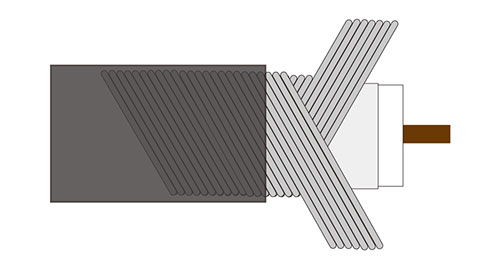
Core Wire : Stranded wire(45 x 0.12mm)
Material : Oxygen-free copper
[Insulator]
Material : Foamed polyethylene
[Conductive Vinyl]
Thickness : 0.25mm
[Shielded Wire]
Method : Spiral wound / /Double shielded
“Right-handed spiral + Left-handed spiral”
(①78 x 0.1mm + ②78 x 0.1mm)
Material : Oxygen-free copper (Tin-plating)
[Sheath]
Material : Soft vinyl
[Outer Diameter] Ø6.8mm
[Electrical Characteristics]
Capacitance(@/ft) : 27pf
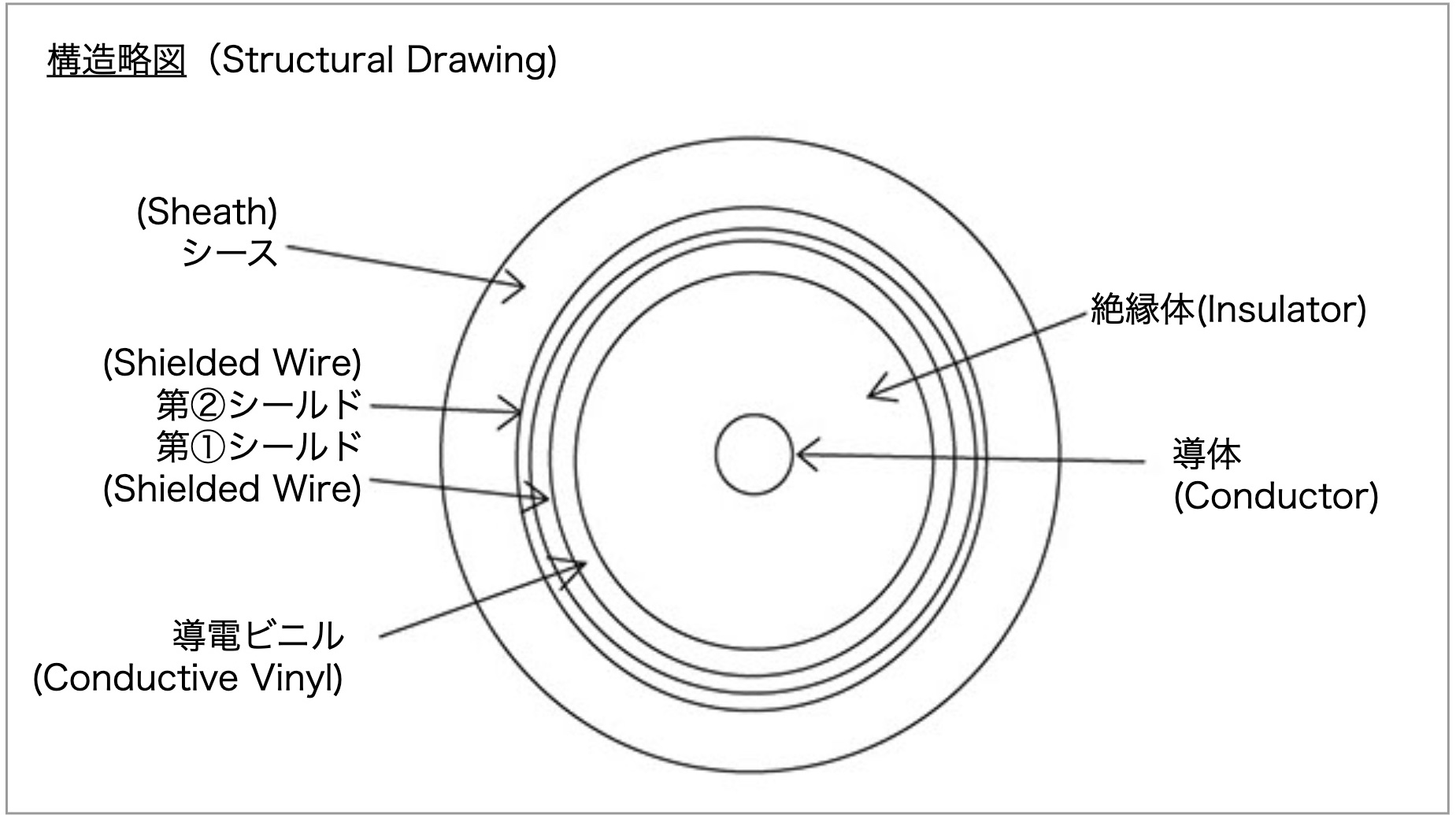
構造 : 1芯 撚線(45本 x 0.12mm)
材質 : 無酸素銅
[絶縁体]
材質 : 発砲ポリエチレン
[導電ビニル]
厚さ : 0.25mm
[シールド]
方式:横巻 / ダブルシールド
“右巻き+左巻き”
(①78本 x 0.1mm+②78本 x 0.1mm)
材質 : 無酸素銅(錫メッキ)
[シース]
材質:軟質ビニル
[外径]Ø6.8mm
[電気的特性]
静電容量(@/ft):27pf
Allies Original Custom Plugs
The Allies original custom plugs consist of 3 pieces carefully milled by CNC machines. The plug structure allowed us to solve the problems to the modern-day plugs. The Allies plug will be our highest ranked class in our lineup.
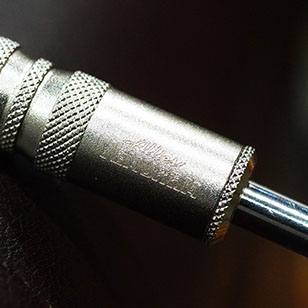
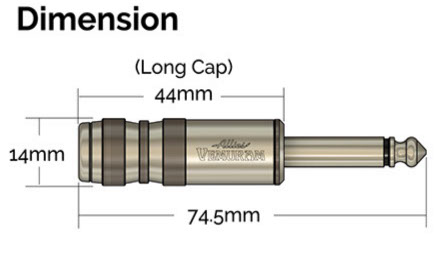
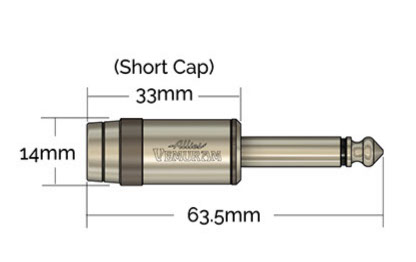
About this product :
Concerning the joint connections for the Cables and Plugs, the following are the specifications.
The specifications below are patent pending. The inside surface of the plug is cut and shaped as a spiral screw thread. Con-necting the cable to this plug and tightening the external M4 setscrews, allows the cable to sit and prevent from shifting from excess force. Additionally, on the opposite side of the M4 setscrews there is an oval slit. This slit lets the outer surface of the cable(sheath) to press-fit into the oval slit, allowing it to prevent the twists and bends inside the plug. Assuming that the guitar players are moving around on stage, there are several concerns which the cables might twist, bend or for the worse case disconnect. But these key factors will help protect the signal line from not disconnecting from the plug to the cable and also prevents excess noise. - (Patent Pending : JP2019-236265)
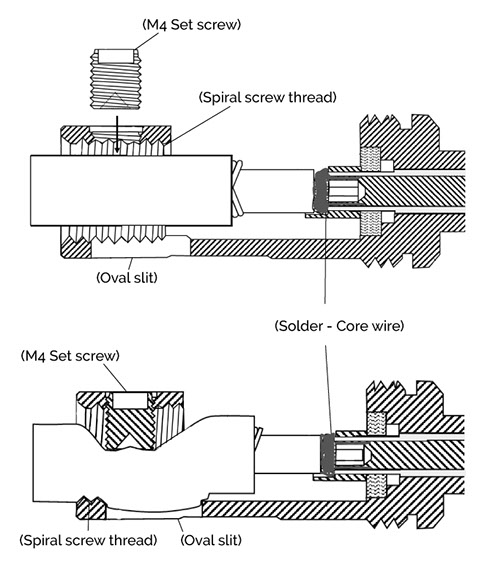
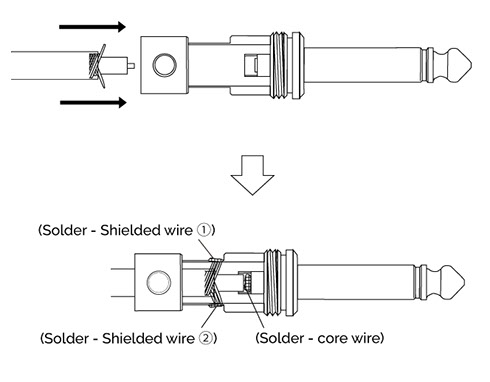
Common plugs that are used for guitar cables.
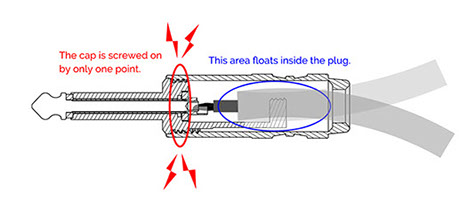
The structure of Allies Original Custom Plugs
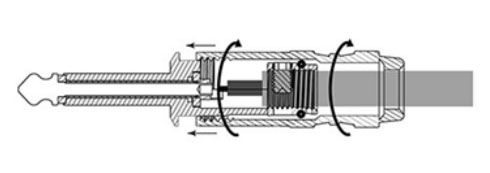


Allies Classic Standard Plugs
(Scheduled to be released after 2021)
A well-balanced plug that will be structured differently from the Allies Custom Plugs.
We designed these plugs as simple as possible. The cable jackets(sheath) are set by a swage, the traditional way of jointing the cable to the plugs. The so-called orthodox sound will be achieved by these Allies Classic Standard Plugs.
